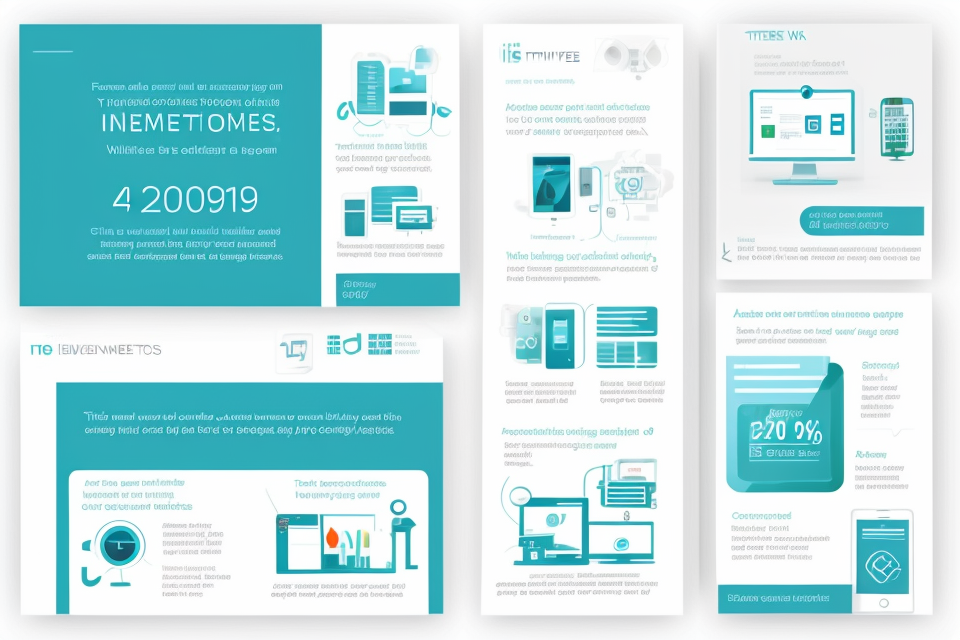In the world of finance, cybersecurity is a top priority for regulators and businesses alike. The SEC, or Securities and Exchange Commission, has proposed a new cybersecurity rule in 2023 that aims to enhance the protection of customer data and sensitive information. This rule will impact businesses in the financial industry and will require them to implement certain cybersecurity measures to ensure the safety of their data. In this article, we will explore the details of the SEC cybersecurity rule 2023 and how it will affect businesses in the financial sector.
The SEC Cybersecurity Rule 2023 is a new regulation implemented by the Securities and Exchange Commission (SEC) to improve the cybersecurity practices of registered investment advisers and broker-dealers. The rule requires these financial institutions to implement specific cybersecurity measures, including the establishment of a cybersecurity program, regular risk assessments, and the adoption of written policies and procedures. The aim of the rule is to protect investors and the financial industry from cyber threats, and it will impact businesses by requiring them to allocate resources to meet the new requirements. Failure to comply with the rule may result in enforcement actions and fines. Overall, the SEC Cybersecurity Rule 2023 is a significant development in the financial industry’s efforts to address cybersecurity risks.
Understanding the SEC Cybersecurity Rule 2023
Background and Overview
In recent years, cyber attacks have become increasingly sophisticated and widespread, leading to significant financial losses for businesses and investors alike. The SEC, or Securities and Exchange Commission, has recognized the need for a comprehensive cybersecurity rule to protect the financial industry from these growing threats.
The SEC Cybersecurity Rule 2023 is a set of guidelines and regulations designed to promote cybersecurity practices within the financial industry. The primary objectives of the rule are to:
- Enhance the cybersecurity resilience of registered entities
- Protect customer information and assets
- Facilitate the development of a cohesive, comprehensive approach to cybersecurity risk management
By implementing the SEC Cybersecurity Rule 2023, the SEC aims to ensure that financial institutions are better equipped to prevent, detect, and respond to cyber threats, ultimately protecting investors and maintaining the integrity of the financial system.
Key Provisions of the Rule
Definition of “covered entity”
The SEC Cybersecurity Rule 2023 applies to all registered investment advisers, which are defined as “covered entities.” This includes any individual or organization that provides investment advice for compensation and has assets under management of at least $100 million.
Requirements for written policies and procedures
The rule requires covered entities to develop and implement written cybersecurity policies and procedures that are reasonably designed to address the potential risks associated with their business. These policies and procedures must be reviewed and updated annually, and the covered entity must maintain records of their compliance with the rule.
Risk assessment and mitigation requirements
The rule requires covered entities to conduct regular risk assessments to identify potential cybersecurity threats and vulnerabilities. Based on these assessments, the covered entity must implement reasonable measures to mitigate the identified risks. This may include implementing multi-factor authentication, encrypting sensitive data, and regularly patching software.
Incident reporting and response requirements
The rule requires covered entities to promptly report any cybersecurity incidents to the SEC, as well as to their clients. The covered entity must also have a plan in place for responding to such incidents, including procedures for notifying affected clients and for restoring normal operations as quickly as possible.
Impact on Businesses
Compliance Challenges
The SEC Cybersecurity Rule 2023, which aims to protect investors and the financial industry from cyber threats, presents a number of compliance challenges for businesses. Here are some of the key difficulties that companies may face:
Understanding the Requirements of the Rule
One of the primary challenges of the SEC Cybersecurity Rule 2023 is that it is highly detailed and complex. The rule includes numerous requirements that companies must comply with, and it can be difficult for businesses to fully understand all of the implications of the rule. For example, companies must conduct regular risk assessments, develop incident response plans, and implement certain policies and procedures.
Implementing the Necessary Policies and Procedures
Once a company understands the requirements of the SEC Cybersecurity Rule 2023, it must then implement the necessary policies and procedures to comply with the rule. This can be a significant challenge, as it requires businesses to assess their current cybersecurity measures and identify any gaps or weaknesses. It may also require businesses to invest in new technology or resources to ensure compliance.
Conducting Regular Risk Assessments and Incident Response Planning
Another key challenge of the SEC Cybersecurity Rule 2023 is that it requires companies to conduct regular risk assessments and incident response planning. This means that businesses must constantly monitor their systems and networks for potential threats, and develop plans to respond to cyber incidents if they occur. This can be a time-consuming and resource-intensive process, and it may require companies to hire additional staff or consultants to help with these efforts.
Overall, the SEC Cybersecurity Rule 2023 presents a number of compliance challenges for businesses. It is important for companies to understand the requirements of the rule and take steps to comply with it in order to protect themselves and their customers from cyber threats.
Potential Benefits
- Improved cybersecurity posture: The SEC Cybersecurity Rule 2023 aims to enhance the overall cybersecurity posture of businesses by mandating the implementation of comprehensive security measures. These measures may include the establishment of cybersecurity policies, employee training programs, regular risk assessments, and the adoption of advanced technologies to detect and prevent cyber threats. By complying with the rule, businesses can fortify their defenses against cyber attacks, minimizing the risk of data breaches and other security incidents.
- Enhanced investor confidence: The SEC Cybersecurity Rule 2023 seeks to promote transparency and accountability in the financial industry by mandating that businesses disclose certain information related to their cybersecurity practices. This increased transparency can help boost investor confidence by providing them with a clearer understanding of the risks associated with investing in a particular company. Moreover, the rule may encourage businesses to prioritize cybersecurity, leading to improved risk management and a more secure investment environment.
- Reduced risk of financial loss due to cyber incidents: Cyber attacks can result in significant financial losses for businesses, including the costs associated with data breaches, business disruptions, and reputational damage. By implementing the measures mandated by the SEC Cybersecurity Rule 2023, businesses can reduce the likelihood of such incidents occurring. Additionally, the rule may encourage businesses to develop robust incident response plans, enabling them to better manage and mitigate the impact of any cyber incidents that do occur. Overall, complying with the rule can help businesses minimize their exposure to financial losses related to cybersecurity.
Preparing for the SEC Cybersecurity Rule 2023
Assessing Current Cybersecurity Practices
As the SEC Cybersecurity Rule 2023 approaches, businesses must prepare by assessing their current cybersecurity practices. This assessment will help identify areas of non-compliance and provide a roadmap for achieving compliance with the new regulations.
Conducting a Comprehensive Risk Assessment
The first step in assessing current cybersecurity practices is to conduct a comprehensive risk assessment. This involves identifying potential vulnerabilities and threats to the organization’s systems and data. A risk assessment can help businesses prioritize their security efforts and allocate resources more effectively.
Identifying Areas of Non-Compliance
Once the risk assessment is complete, businesses must identify areas of non-compliance with existing cybersecurity regulations. This includes assessing compliance with the SEC’s current cybersecurity guidance, as well as other relevant regulations such as HIPAA or PCI-DSS. Identifying areas of non-compliance will help businesses focus their efforts on the most critical areas of their cybersecurity posture.
Developing a Roadmap for Compliance
After identifying areas of non-compliance, businesses must develop a roadmap for achieving compliance with the SEC Cybersecurity Rule 2023. This roadmap should include specific steps that the organization will take to address areas of non-compliance, as well as a timeline for completion. It is essential to involve key stakeholders in the development of this roadmap, including IT, legal, and executive leadership.
Overall, assessing current cybersecurity practices is a critical step in preparing for the SEC Cybersecurity Rule 2023. By conducting a comprehensive risk assessment, identifying areas of non-compliance, and developing a roadmap for compliance, businesses can ensure that they are well-positioned to meet the new regulations and protect their valuable assets.
Implementing Necessary Changes
To prepare for the SEC Cybersecurity Rule 2023, businesses will need to implement necessary changes to ensure compliance. These changes may include updating policies and procedures, providing training to employees, and developing incident response plans.
Updating Policies and Procedures
One of the most important steps that businesses will need to take is to update their policies and procedures to align with the requirements of the SEC Cybersecurity Rule 2023. This may involve reviewing existing policies and procedures to identify areas that need to be updated or developed, and creating new policies and procedures as needed.
It is important for businesses to ensure that their policies and procedures are comprehensive and clearly outline the steps that employees should take to prevent and respond to cybersecurity threats. This may include developing policies around password management, access controls, and incident response.
Providing Training to Employees
Another important step that businesses will need to take is to provide training to employees on the requirements of the SEC Cybersecurity Rule 2023 and the policies and procedures that have been put in place. This training should be provided to all employees, including those who may not have direct involvement in cybersecurity efforts.
The training should cover a range of topics, including how to identify and respond to cybersecurity threats, how to use security tools and software, and how to create and maintain strong passwords. It is important for employees to understand the importance of cybersecurity and their role in preventing and responding to threats.
Developing Incident Response Plans
Developing incident response plans is another critical step that businesses will need to take to prepare for the SEC Cybersecurity Rule 2023. These plans should outline the steps that will be taken in the event of a cybersecurity incident, including who will be responsible for different aspects of the response and how the incident will be managed.
It is important for businesses to test their incident response plans regularly to ensure that they are effective and that all employees understand their roles and responsibilities in the event of an incident. This will help to ensure that businesses are able to respond quickly and effectively to any cybersecurity threats that may arise.
Seeking Professional Assistance
In order to effectively prepare for the SEC Cybersecurity Rule 2023, businesses should consider seeking professional assistance. This can include hiring a cybersecurity consultant, engaging legal counsel, and utilizing technology solutions to enhance cybersecurity.
Hiring a Cybersecurity Consultant
Hiring a cybersecurity consultant can provide businesses with valuable expertise and guidance on how to comply with the SEC Cybersecurity Rule 2023. These professionals can assess a company’s current cybersecurity measures, identify areas of weakness, and recommend improvements. They can also assist with the development of a comprehensive cybersecurity plan and provide ongoing support and monitoring to ensure compliance with the rule.
Engaging Legal Counsel
Engaging legal counsel is also important for businesses preparing for the SEC Cybersecurity Rule 2023. Legal professionals can provide guidance on the legal implications of the rule and help businesses navigate the regulatory landscape. They can also assist with the development of policies and procedures to ensure compliance with the rule and provide representation in the event of an audit or enforcement action.
Utilizing Technology Solutions
Finally, businesses should consider utilizing technology solutions to enhance their cybersecurity measures. This can include implementing multi-factor authentication, investing in cybersecurity software, and using encryption to protect sensitive data. Technology solutions can help businesses detect and prevent cyber threats, and can provide real-time monitoring and alerting to ensure compliance with the SEC Cybersecurity Rule 2023.
Overall, seeking professional assistance is a crucial step for businesses preparing for the SEC Cybersecurity Rule 2023. With the help of cybersecurity consultants, legal counsel, and technology solutions, businesses can ensure that they are in compliance with the rule and better positioned to protect themselves against cyber threats.
Key Takeaways
The SEC Cybersecurity Rule 2023 represents a significant milestone in the ongoing efforts to strengthen cybersecurity within the financial industry. In order to ensure compliance with the rule, affected businesses must adopt a comprehensive approach that encompasses several key areas:
- Risk Assessments: Conducting regular risk assessments is essential for identifying potential vulnerabilities and determining the appropriate controls to mitigate them. This process should be tailored to the specific needs of each organization and involve a thorough evaluation of both internal and external threats.
- Policy Updates: In light of the SEC Cybersecurity Rule 2023, organizations must review and update their existing cybersecurity policies to align with the new requirements. This may involve incorporating new protocols for data protection, incident response, and third-party vendor management.
- Employee Training: To effectively implement the rule, organizations must ensure that their employees are well-versed in the new cybersecurity policies and procedures. This may include providing training on how to identify and respond to potential threats, as well as educating employees on their individual responsibilities in maintaining a secure environment.
- Technology Solutions: In addition to policy updates, businesses may need to invest in new technology solutions to meet the requirements of the SEC Cybersecurity Rule 2023. This could include implementing advanced threat detection tools, enhancing data encryption methods, or deploying multi-factor authentication systems.
By focusing on these key areas, organizations can effectively prepare for the SEC Cybersecurity Rule 2023 and significantly enhance their overall cybersecurity posture. Doing so will not only help businesses avoid potential regulatory penalties, but also maintain investor confidence and safeguard sensitive customer data.
FAQs
1. What is the SEC Cybersecurity Rule 2023?
The SEC Cybersecurity Rule 2023 is a set of regulations that the US Securities and Exchange Commission (SEC) is proposing to implement in order to enhance the cybersecurity practices of registered investment advisers and broker-dealers. The rule aims to protect investors and the financial industry from cyber threats by requiring registered entities to implement certain cybersecurity policies and procedures.
2. Why is the SEC proposing this rule?
The SEC is proposing this rule in response to the increasing number of cyber attacks targeting the financial industry. These attacks can result in significant financial losses for investors and damage to the integrity of the financial markets. The SEC believes that the proposed rule will help to reduce the risk of cyber attacks and protect investors’ sensitive information.
3. What kind of cybersecurity policies and procedures will be required under the rule?
Under the proposed rule, registered entities will be required to implement a variety of cybersecurity policies and procedures, including: (1) the development of a written cybersecurity plan that addresses the specific risks and threats facing the entity; (2) the appointment of a chief information security officer (CISO) or a similar role to oversee the entity’s cybersecurity program; (3) the implementation of access controls and data encryption measures to protect sensitive information; and (4) the development of procedures for responding to and reporting cybersecurity incidents.
4. Will all registered entities be subject to the same requirements under the rule?
No, the proposed rule includes a tiered approach to cybersecurity requirements. Registered entities will be classified into one of four tiers based on their level of financial exposure and potential impact on the broader financial system. Entities in higher tiers will be subject to more stringent requirements than those in lower tiers.
5. How will the SEC enforce compliance with the proposed rule?
The SEC will be responsible for enforcing compliance with the proposed rule. Registered entities will be required to provide regular reports to the SEC detailing their compliance with the rule’s requirements. The SEC will also conduct periodic examinations and audits to ensure that registered entities are complying with the rule. Failure to comply with the rule could result in enforcement actions, including fines and other penalties.



